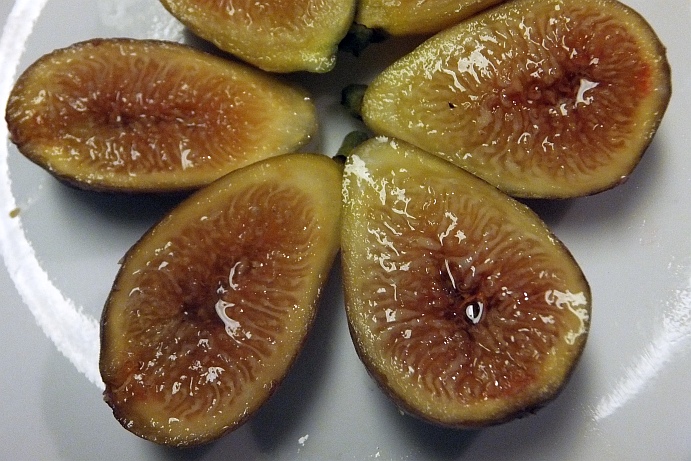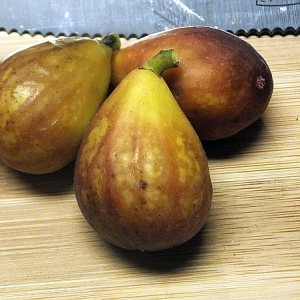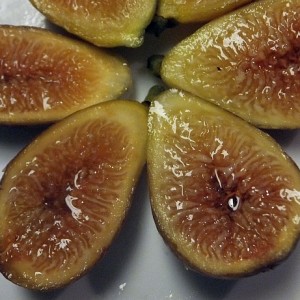This site contains affiliate links for which I may be compensated.
Hunt
Hunt Information


-
Possible Synonyms / AKA:
Belleclare #14, Hunt, Hunts, Hunt's
-
Introduced By:
-
Origin:
-
Main Flavor Group:
-
Family Group:
-
Fig Type:
Common - Self fertile and will grow anywhere conditions are suitable -
Cold Hardy:
Yes -
Container Variety:
Yes -
Easy Rooting:
N/A -
Main Season:
mid -
Availability:
N/A -
Breba Crop:
Yes -
Seed Crunch:
non -
Eye:
N/A -
Skin Toughness:
soft -
Fruit Size:
Medium to large -
Rain Resistance:
N/A -
Tree Vigor:
N/A -
External Links:
https://www.georgiaencyclopedia.org/articles/business-economy/benjamin-hunt-1847-1934
https://www.ourfigs.com/forum/variety-test/4759-hunt
http://figs4fun.com/Info/Info_Hunt.html
https://www.ourfigs.com/forum/figs-home/100954-hunt-2016-main
Description
Sometimes incorrectly referred to as LSU Hunt. Though used in the LSU "> LSU breading program, it was not developed by LSU . It was actually a seedling fig developed by B. W. Hunt in Eatonton, Georgia.
Very cold tolerant. Hunt fig trees have large, long-necked violet brown fruit with amber / light red flesh. Fruit has a short stem but long neck, allowing the fruit to hang down as it ripens. This habit adds to it’s rot resistance, as the eye of the fig is less adapt to fill with water. Long ripening season. The trees are very dependable producer. Rich sweet flavor. Closed eye. Fruity ripens in July.
A small brown fig with amber pulp tinged with strawberry, bred by E. W. Hunt of Eatonton, Georgia in the 1920s. Pyriform with a short distinct neck. Distinctive feature is its long, slender stems to 3/4" long stems that help it shed rain. Superb flavor, sweet and rich. Not a heavy bearer, but well-adapted in the rainy areas of the South.
This is one of the best figs for home use since it is so dependable and bears a good crop of high quality fruit. Ripens about 10 days after Celeste and for about two weeks longer.
The Hunt Fig Tree was bred in the 1920’s in Georgia and is one of the most cold Hardy varieties for Southeastern growers. Hunt figs requires a long, hot season to ripen so is recommended for warmer climates, but even growers in the Northwest will receive decent crops of this incredibly delicious fig. Figs are long-necked with violet brown skin and a beautiful light red flesh. Flavor is richly sweet and amazing for fresh eating, though fruits must be perfectly ripe for best flavor at which point it has some of the highest sugar content of any fig variety. Hunt figs will produce a small Breba crop and large main crops and is particularly resistant to spoiling in humid climates.
Condit Monograph
Hunt: A seedling fig developed by B. W. Hunt, Eatonton, Georgia, before 1929, as the result of crossing Ischia Green (Verte) with pollen sent from a Caprifig in California. In this seedling there was realized the objective of producing a fig having a long stalk which would allow the fruit to hang downward, so that water from rain or dew would drain away from the eye. The tree bears a light Breba crop and a heavy Main crop , and in Georgia the figs are parthenocarpic. In California the tree drops its fruit badly; the variety is therefore incompletely parthenocarpic. Found only in collections.
Tree vigorous, with upright branches; terminal buds green. Leaves medium to large, moderately glossy, 3- to 5-lobed; upper sinuses of medium depth and width, lower sinuses shallow; base subcordate; margins coarsely crenate. Description is from fruit grown at Riverside and Los Angeles.
Breba crop small; fruits small to medium, elongated, oblique-pyriform; neck distinct, but merging gradually into the body; stalk up to 1/2 inch long; color green, shading to brown toward the apex; pulp strawberry, somewhat dry and mealy in texture; quality poor.
Second-crop figs small to below medium, up to 1-7/8 inches long by 1-1/4 inches broad, pyriform, with a distinct, short neck; average weight 20 grams; stalk variable, but generally slender, up to 3/4 inch long; ribs fairly prominent; eye small, scales chaffy, erect; surface dull, with distinct bloom; white flecks scattered, prominent, becoming masked by the bronze body color; pulp amber, tinged with strawberry; seeds practically none; flavor rich and sweet; quality fair to good. Similar to Celeste (Malta), but of larger size. (Plate 27,B.)
Caprified specimens much the same, except for dark-strawberry pulp and fertile seeds; average weight 30 grams.
Hunt: A seedling fig developed by B. W. Hunt, Eatonton, Georgia, before 1929, as the result of crossing Ischia Green (Verte) with pollen sent from a Caprifig in California. In this seedling there was realized the objective of producing a fig having a long stalk which would allow the fruit to hang downward, so that water from rain or dew would drain away from the eye. The tree bears a light Breba crop and a heavy Main crop , and in Georgia the figs are parthenocarpic. In California the tree drops its fruit badly; the variety is therefore incompletely parthenocarpic. Found only in collections.
Tree vigorous, with upright branches; terminal buds green. Leaves medium to large, moderately glossy, 3- to 5-lobed; upper sinuses of medium depth and width, lower sinuses shallow; base subcordate; margins coarsely crenate. Description is from fruit grown at Riverside and Los Angeles.
Breba crop small; fruits small to medium, elongated, oblique-pyriform; neck distinct, but merging gradually into the body; stalk up to 1/2 inch long; color green, shading to brown toward the apex; pulp strawberry, somewhat dry and mealy in texture; quality poor.
Second-crop figs small to below medium, up to 1-7/8 inches long by 1-1/4 inches broad, pyriform, with a distinct, short neck; average weight 20 grams; stalk variable, but generally slender, up to 3/4 inch long; ribs fairly prominent; eye small, scales chaffy, erect; surface dull, with distinct bloom; white flecks scattered, prominent, becoming masked by the bronze body color; pulp amber, tinged with strawberry; seeds practically none; flavor rich and sweet; quality fair to good. Similar to Celeste (Malta), but of larger size. (Plate 27,B.)
Caprified specimens much the same, except for dark-strawberry pulp and fertile seeds; average weight 30 grams.
If you'd like your banner to be shown here and throughout Fig Database, send us a message.
Photos Add Your Image
YouTube Videos
No Videos Found









